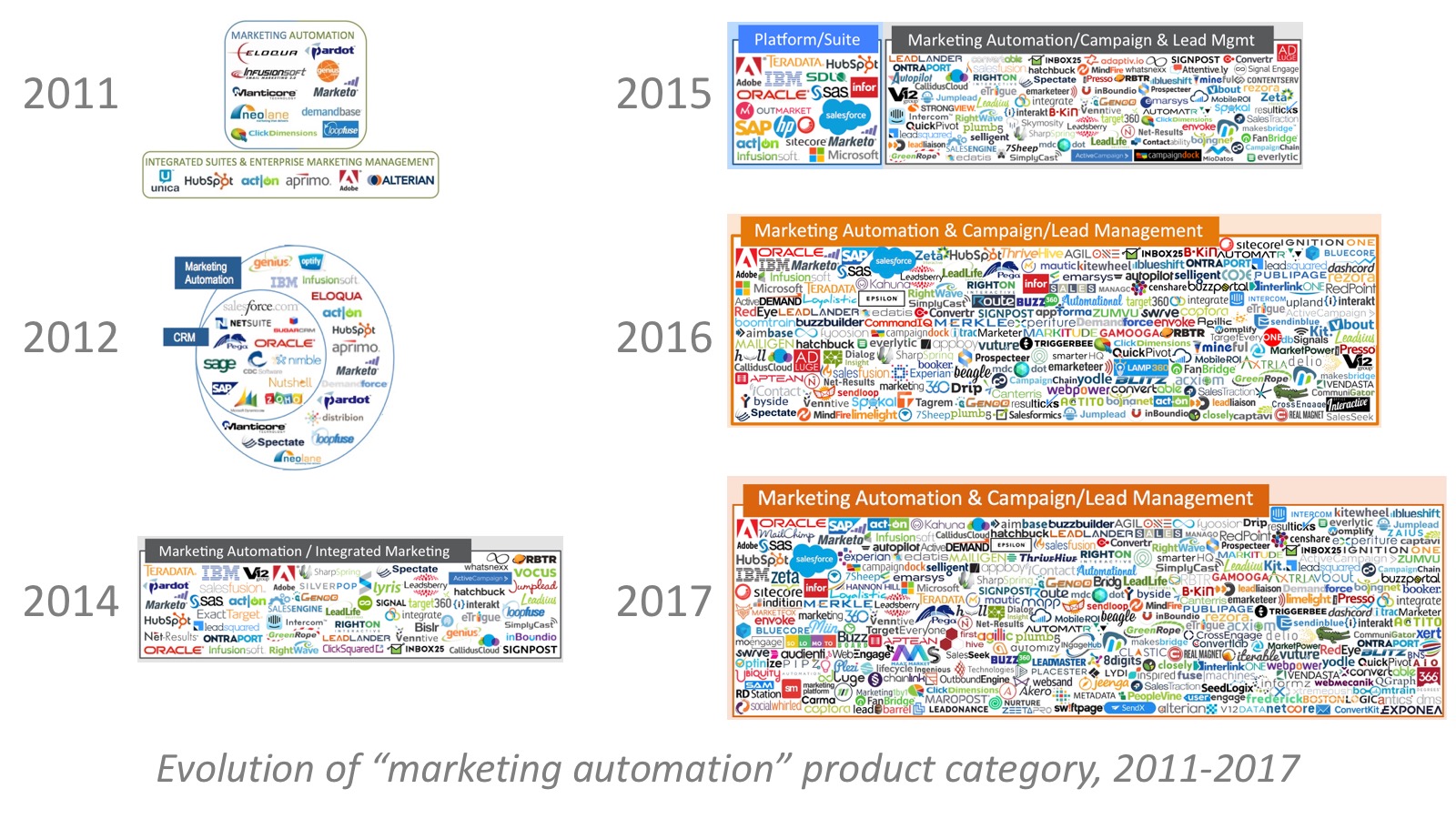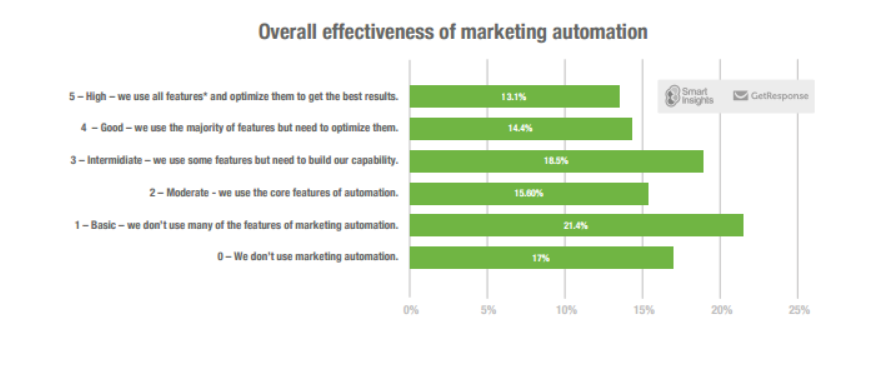In this high tech push-of-a-button day and age, it’s easy to get pulled into the hype of all the latest and greatest of automation technologies. However, even with all of that automation technology right at your fingertips it won’t make us better marketers if we aren’t actually using it.
So how much technology do we really need to be a successful marketer?
Scott Brinker recently took a peek into the world of automation systems, specific to the marketing genre, and his findings are astounding to say the least.

Brinker provided us with a preview of this ever growing landscape by showing the marketing automation category going back to one of his first studies in 2011 all the way to the current year, 2017. At a quick glance at the images above it’s easy to see that not only has the technology sprouted but it’s almost exploded with growth over the last six years.
The snapshot for 2017 shows 212 vendors, 66 of them are brand new this year. With that many vendors available to a marketer, how in the world does one even begin to narrow down which one or ones is the right fit for them?
The simple answer is of course research.
When looking for an automation solution, a good place to start is always with a good old Google search. Once you have skimmed the surface, then it’s time to dive deeper. Check on blogs you trust, such as this one, or other non-affiliated lists that spell out each vendor’s pros and cons. Talk to colleagues that might already be using a solution that fits your needs.
Don’t get overwhelmed. That is sometimes easier said than done, since looking at any marketing automation platform’s pricing page you will most likely quickly be swamped with features galore, plans, and pricing.
Take a deep breath and dig in with a specific set of tools that you need set in stone in the back of your mind’s eye.
The bigger question – how much is too much?
In a recent study conducted by GetResponse, they polled over 255 email marketers in B2B and B2C regarding the effectiveness of their current marketing automation tools. Only 13.1% said they were highly effective. Meaning that the majority fell in the Good or Intermediate ranges (14.4 and 18.5 respectively).

That’s a whole lot of automation technology that just isn’t cutting it for the marketing crowd as a whole.
Interesting takeaway from this report could be that marketers are spending a huge chunk of their overall advertising budget on automation technology tools, but they just aren’t getting the return they were hoping for.

Back in August of 2016, AJ Agrawal, writing for Entrepreneur.com, was particularly cautious of this very same subject. He warned against using marketing automation tools to support a lazy side chair approach to marketing. Automation tools are designed to increase productivity and the effort that it would take to do the same tasks manually, not replace it.
Which brings us to the posed question: How much is too much?
First, make a list of tasks that you would like to replace with an automation tool. Keeping in mind that these tools that you are seeking should enhance your efforts, not take away the human aspect of your marketing plan.
It seems simplistic, but getting a handle on a clear path of what you need now – not 10 years from now – is the key to making the right marketing automation choice. Just because the vendor offers a “Lambo” version, doesn’t meant that you need to blow your budget on it. If everything that your company needs falls in the low or even mid-tier plans, then by all means stick with either one of those.
What do you think?
How much automation is too much for you? Do you have any specific set of tools that you feel that your company couldn’t live without? Share your thoughts in the comments below.



